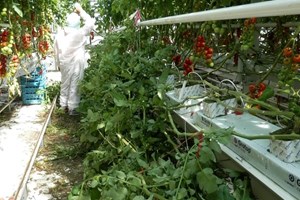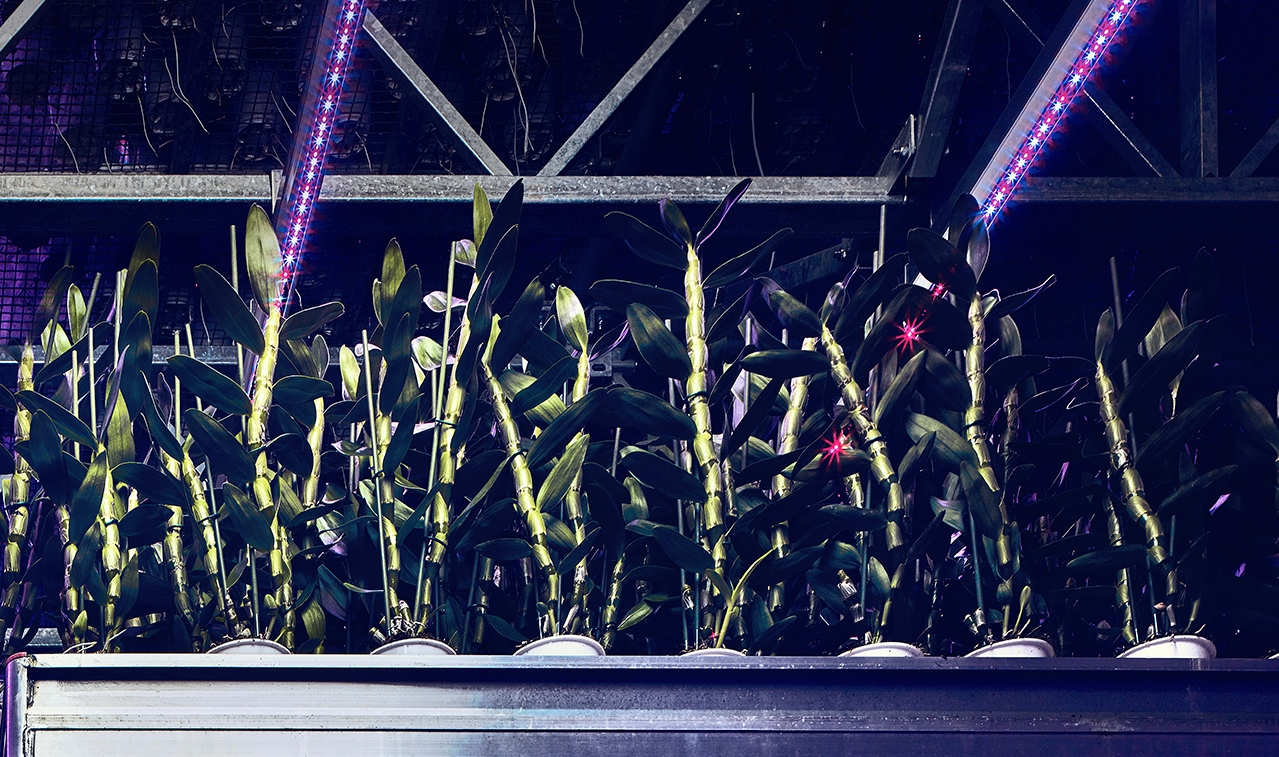At the start of a new cultivation dont tighten your crop wires

Around october/november many crop seasons are in their final stages. Old crops are being removed, greenhouses cleaned and preparations for the new season are taking off. It might be tempting to tighten the crop wire. But be aware! This can have a devastating effect on your greenhouse.
This is why you have to maintain a sag in the crop wire in every section of your greenhouse
The thickness of the wire is based on the crop load, the length of the greenhouse, section distance and the sag of the wire in each section. When you change any of this parameters an overload can occur. This can result in breakage of the crop wire, damaging the wire arc in the end gable, or ‘shortening’ the greenhouse with breakage of the roof glass as a result.
How to prevent getting in trouble?
Limit the crop load to the number the greenhouse is designed on. (See below table for the common crop loads). More important: maintain the sag in each section.

The normative sag is depending on the section size and crop load and lies between a minimum of 175 and a maximum of 300 mm. With decreasing the sag, the tension on the end gable will increase fast. Together with the tension load of a screen this can result in an overload to the gutter or end post. Besides deforming the post it will also have an effect on the expansion of the greenhouse. Through the large tension force the tolerance between the roof sheets and glacing bars will be minimized and results in glass breakage.
Therefore, follow the prescribed guidelines, which are described below. These are the guidelines of the ISSO 88, Quality requirements for greenhouses. If you have questions please contact your greenhouse builder or us. I’ll be happy to further inform you in this matter.
Guidelines: ISSO 88 Quality requirement assembly
When installing crop wires the following requirements apply:
- In order to prevent white rust and corrosion of the crop wires on the roll, it is transported and stored dry. Wire is not stored or rolled over recently poured concrete (<5 days);
- Single galvanized wire hangers have a thickness of at least 5 mm;
- Double galvanized wire hangers have a thickness of at least 4 mm;
- Preferably crop wires are not bent while installing on the crop wire arc. If you decide to bend the wires to the crop wire arc, then use a fixture (thimble);
- Avoid kinks in the wires while unrolling;
- Knots in crop wires are not allowed;
- Crop wire shall be delivered in the correct length;
- Ensure correct sagging of the crop wire under load; do not use tensioners for fastening and for the purpose of tensioning of the wires;
- Install the crop wire in the correct manner to the crop bow on one side of the greenhouse. On the other side of the greenhouse pull the wire tight by hand and then let back again to the calculated length;
- The exact length of the crop wire when installed is specified by the supplier or may be determined with the aid of a calculation program such as Casta / Greenhouse construction.
Reference values for the load by crops and cultivation gutters. Winter and summer load
Cultivation | Crop load [N/m2] | Crop gutter [N/m2] | ||
| Summer | Winter | Summer | Winter |
Strawberries | 0 | 0 | 300 | 300 |
Tomatoes | 200 | 200 | 130 | 130 |
Bell pepper | 120 | 120 | 150 | 150 |
Remainder vegetabales | 150 | 150 | 130 | 130 |


